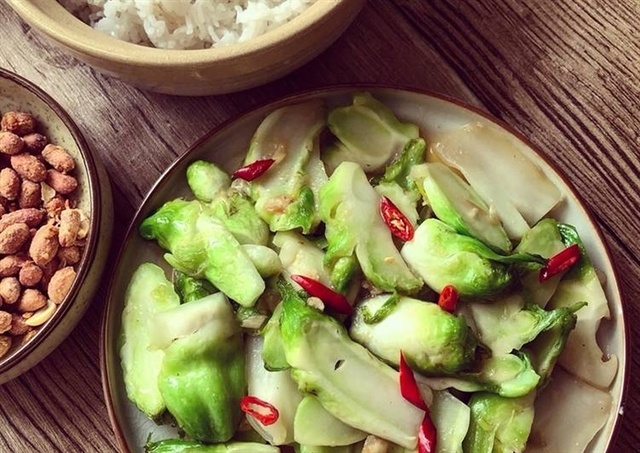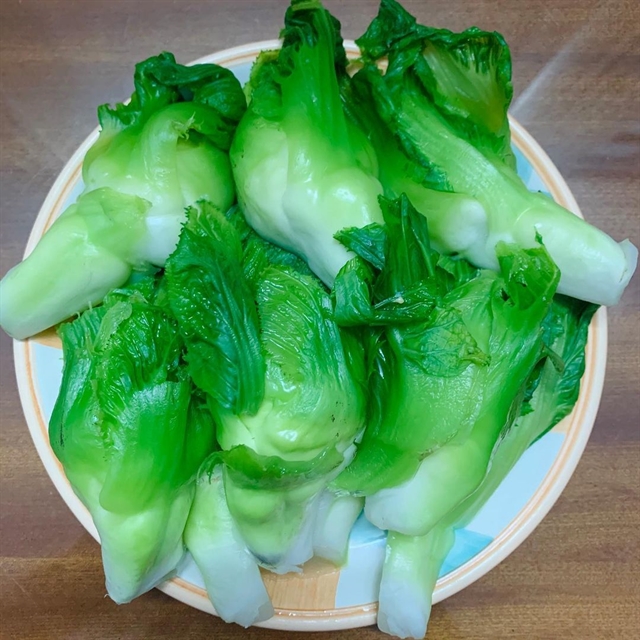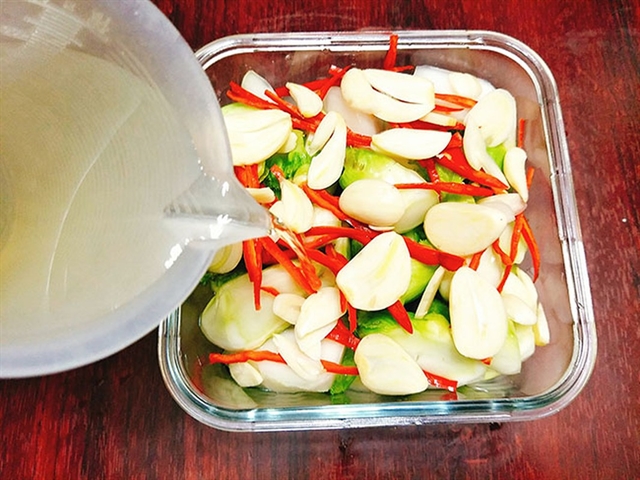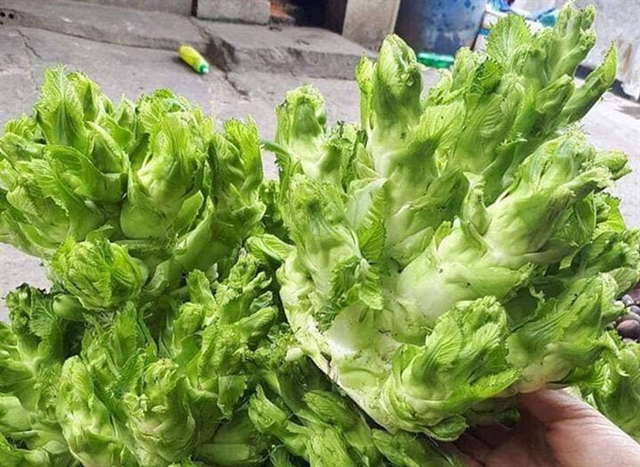 Life & Style
Life & Style

Thanh Hà
Sa Pa is well known not only for its natural beauty, but as a place with many unique and attractive specialties including rock cress sprouts, locally known as cải mầm đá.
Located in the northwestern province of Lào Cai, Sa Pa is the perfect landscape for growing cải mầm đá, a vegetable that locals cook into many tasty dishes, such as boiled and dipped into soy sauce mixed with boiled eggs, fried with beef or pork with garlic, and included into soup cooked from pork or chicken bones with rock cress sprouts and other vegetables.
A Sa Pa woman named Lò Thị Duyên told Việt Nam News about several recipes for enjoying the special taste of cải mầm đá.
 |
| Foodies and visitors to Sa Pa often order fried cải mầm đá with minced garlic for its amazing taste. Photo kienthuc.net.vn |
One is cải mầm đá fried with garlic.
You will need the following ingredients: 400 grammes of fresh rock cress sprouts, five pieces of garlic, two dried chillies, soy sauce and salt.
For the first step, “You should choose cải mầm đá with young, small shoots, clean it well before cutting it into small pieces, soak it in light salted water for 10-15 minutes, and then clean it again one more time,” said Duyên.
The second step is to cut each shoot into two parts and fry each in a little cooking oil and garlic for a few minutes before adding dried chilli and stirring well for at least two more minutes. The last step is to add a little salt and a tablespoon of soy sauce and finish the cooking, she said.
 |
| Locals say they like boiled rock cress sprouts, locally known as cải mầm đá, dipped in soy sauce and chilli. Photo kienthuc.net.vn |
It is a perfect dish, with an attractive green colour, fragrant from garlic, sweet and crispy from the cải mầm đá, Duyên said.
Another favourite dish is pork or chicken bone soup with cải mầm đá, you will need 350g of pork or chicken bones or ribs, 8-10 young rock cress sprout shoots, 2-3 fresh onions, 5-7 slices of ginger, one tablespoon of cooking wine, salt, pepper, and a broth mix.
After cleaning the bones, they need to be parboiled for five minutes to release any fishy smell. Then, they need to be cleaned again and stewed under modest heat for at least an hour before adding the ginger slices, cooking wine, broth mix, and seasoning to the pot. Then, add the cải mầm đá shoots and cook for a further five minutes.
The soup is a fragrant mix of sweetness of the pork bones and the rock cress shoots, fragrant from the ginger and the cooking wine.
 |
| Pickled cải mầm đá with garlic and vinegar is so tasty almost everyone who visits Sa Pa has it on the menu. Photo kienthuc.net.vn |
The dish is even more enjoyable when it has been topped with pepper and several pieces of fresh chilli.
Duyên said in the past locals could only find the cải mầm đá vegetable in the high mountain peaks from November to March.
“During these periods, the climate in Sa Pa is rather cold and so suitable for the vegetable’s development.”
She said many guests to Sa Pa ask her whether the rock cress sprouts are bitter or not. In fact, the greens have a light sweet taste and are crispy, which means diners are treated to a unique experience, maybe a little strange but also very attractive, a taste that they will never forget.
Duyên added that, beyond the aforementioned recipes, pickled rock cress sprouts are a beloved dish among both locals and visitors to Sa Pa. With their sour, spicy, and fragrant flavour, they pair especially well with a bowl of hot rice.
 |
| Sa Pa's cải mầm đá is a must-try dish for visitors. Photo kienthuc.net.vn |
Many guests from lower lying lands such as Hà Nội often buy the rock cress sprouts, priced at around VNĐ 50,000-VNĐ 60,000 per kilo to cook and make pickle at home, she said.
Local herbalist Trần Văn Hướng said the rock cress sprout is a rich source of vitamins, which are good for the skin, and helps support the immune system. It is particularly good for those patients with osteoarthritis, especially in the winter season. VNS




